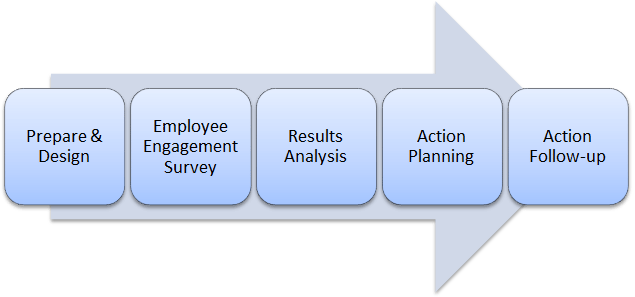Challenging Work as a Driver of Employee Engagement
April 3, 2025
 Challenging Work as a Driver of Employee Engagement
Challenging Work as a Driver of Employee Engagement
Introduction We often hear the term employee engagement being spoken about in various contexts. We are often told by management experts that engaged employees are a source of sustainable competitive advantage. During earlier periods of organizational theory and practice, it was common for the HR (Human Resources) function to take care of administrative aspects such…
 Characteristics of Engaged Workforce
Characteristics of Engaged Workforce
The level of employee engagement can be measured by the willingness and ability of employees to contribute to the success of their organisation. It is their discretionary effort which is an essential element for the good health and well being of a company. A highly engaged workforce shows the high level of engagement in their…
 Benefits of Employee Engagement
Benefits of Employee Engagement
History records how Alexander was able to march on and conquer hitherto unknown lands due his valour and his motivated troops. However, the same history also records, how dissent amongst his troops towards the latter part of his career, cut short his ambitions of supremacy in Asia. Alexander started hiring more outsiders, laying off his…
This is the hardcore fact that the future business performance and revenues and profitability of an organisation no longer depends upon traditional capital management and investment and portfolio management. But the success of any organisation in this constantly changing world of work depends upon human capital management. The companies who understood this fact long before are the most successful and highly productive organisations of the currents times. Those who have just realised it are still struggling to establish a reputation in the industry.
Since the mantra of success of any organisation is the higher involvement, engagement and dedication of employees towards their jobs and their continuous performance to attain more, it is necessary to keep their spirits high, motivate them to perform their best always and generate a breed of satisfied and dedicated employees. Employee Engagement is not a onetime process that can quickly bring results; rather it is an ending process that will go on till the existence of an organisation.
As it is an established fact that there is a clear link between organisational performance and employee engagement, every organisation seeking sustenance and growth in the ever changing world of work quickly respond to the needs of employees along with designing and implementing a customised process to increase the levels of employee engagement. The following are a few basic steps in this process based on the best industry practices.

With this, communication and project management processes are the backbone of the entire employee engagement process. Communication involves plan follow-up, providing timely information and involvement of each level of organisational hierarchy. The project management process includes careful planning, watchful resource management, vigilant budget control and monitoring the actions.
Your email address will not be published. Required fields are marked *